Home » News & Events » Employment Impacts of Wind Industry
Employment Impacts of Wind Industry
As with most construction and commercial development, wind energy industry create jobs. According to the 2016 Clean Jobs New York report, there are 85,197 clean energy workers in New York with 15% (12,400) in renewable energy. Of that 15%, approximately 1,360 jobs are in the wind industry. New York’s clean energy jobs are expected to see a 6% increase in the future (Environmental Entrepreneurs, 2016). Wind projects produce jobs in different ways: direct, indirect, and induced. Direct jobs refer to the labor created directly by the construction, operations and maintenance of the wind farms. Indirect jobs include supporting industries, like manufacturing; component suppliers; and jobs, like attorneys and analysts. Induced jobs include those created by the investment and reinvestment of earnings locally, such as hotels, restaurants, retail, real estate, etc. (National Renewable Energy Laboratory, 2016).
Short-Term Job Creation
Construction Jobs
Construction-related employment for a wind power project usually involves short-term assignments that vary depending on size and location of the project. Typical construction lasts anywhere from six months to more than a year.
Construction jobs comprise the majority of wind-related job creation. In the United States, a 50 MW wind project will create 40 full-time equivalent jobs during the construction period.
Typically, the wind developer will hire a general contractor to manage the project. The general contractor will then subcontract to specialists in civil work (grading, excavation, concrete etc.), electricians, mechanics, etc. Typical construction jobs may include construction managers, heavy equipment operators, and general laborers.
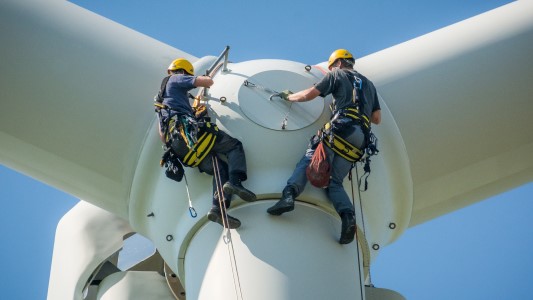
Professional Services
Supporting jobs include environmental professionals who can carry out environmental impact assessments, lawyers who support the siting and permitting process, and bankers who structure and support the financing of projects. During the predevelopment and construction phase there are many jobs created in supporting roles. Depending on the project, some of these roles may also continue into the operation and maintenance phase.
This work may be provided by local workers depending on their skillset and experience. This is especially relevant for any jobs that require localized knowledge, such as conducting environmental impact assessments and navigating local processes, such as siting and permitting.
Manufacturing Jobs
Manufacturing occurs before, during, and after the construction phase of a wind project. The majority of the manufacturing takes place during the early stages, when the wind turbines and their components are manufactured and assembled. Once the project is installed, there will be some part and component manufacturing over the lifetime of the project to repair or replace parts as needed.
Wind turbine and component manufacturing is a growing industry in the United States. The majority of commercial wind turbines sold in the U.S. are manufactured domestically or in Europe. The employment resulting from component manufacturing can be significant. Studies have shown that as a state’s wind market grows, so do manufacturing jobs (Halvatzis & Keyser, 2013)
As of 2020, the American Wind Energy Association (AWEA) found more than 500 wind-related manufacturing facilities across almost every state in the U.S. Manufacturers sometimes source individual components—cabling, transformers, concrete— locally, depending on local skills and resources. New York State has twelve active manufacturing facilities that produce products for the wind industry (AWEA, 2020).
Long-Term Job Creation
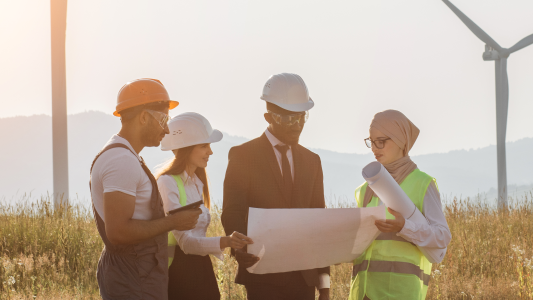
Operations and Maintenance Jobs
Operations and maintenance are required for the duration of the life of the wind project, which ranges from 20 to 30 years.
The number of people employed by a wind power project during commercial operation depends primarily on the project size and administrative structure. Small projects are generally remotely operated and only bring in maintenance personnel when required. Larger projects will have a full-time operations and maintenance staff, the size of which depends on the project size, turbine type, and local labor practices. Approximately two wind technician jobs are created for every 10 to 20 turbines.
Operation and maintenance jobs usually require skilled professionals. Operators are usually project managers who have computer, inventory management, job and equipment scheduling, record-keeping, and data-processing and analysis skills. Maintenance workers often have mechanical and/or electrical proficiency, and are able to perform extensive physical labor, such as climbing and lifting.
Wind projects are often staffed with local personnel with an experienced supervisor or facility manager supporting the employees. Local workers with relevant skills and training, such as experience in the mechanical or electrical trades, can readily be trained in wind power mechanical and electrical systems and maintenance of equipment. Specialized turbine training is often provided by the turbine manufacturer.
Short-Term Job Creation
Construction Jobs
Construction-related employment for a wind power project usually involves short-term assignments that vary depending on size and location of the project. Typical construction lasts anywhere from six months to more than a year.
Construction jobs comprise the majority of wind-related job creation. In the United States, a 50 MW wind project will create 40 full-time equivalent jobs during the construction period.
Typically, the wind developer will hire a general contractor to manage the project. The general contractor will then subcontract to specialists in civil work (grading, excavation, concrete etc.), electricians, mechanics, etc. Typical construction jobs may include construction managers, heavy equipment operators, and general laborers.

Professional Services
Supporting jobs include environmental professionals who can carry out environmental impact assessments, lawyers who support the siting and permitting process, and bankers who structure and support the financing of projects. During the predevelopment and construction phase there are many jobs created in supporting roles. Depending on the project, some of these roles may also continue into the operation and maintenance phase.
This work may be provided by local workers depending on their skillset and experience. This is especially relevant for any jobs that require localized knowledge, such as conducting environmental impact assessments and navigating local processes, such as siting and permitting.
Manufacturing Jobs
Manufacturing occurs before, during, and after the construction phase of a wind project. The majority of the manufacturing takes place during the early stages, when the wind turbines and their components are manufactured and assembled. Once the project is installed, there will be some part and component manufacturing over the lifetime of the project to repair or replace parts as needed.
Wind turbine and component manufacturing is a growing industry in the United States. The majority of commercial wind turbines sold in the U.S. are manufactured domestically or in Europe. The employment resulting from component manufacturing can be significant. Studies have shown that as a state’s wind market grows, so do manufacturing jobs (Halvatzis & Keyser, 2013)
As of 2020, the American Wind Energy Association (AWEA) found more than 500 wind-related manufacturing facilities across almost every state in the U.S. Manufacturers sometimes source individual components—cabling, transformers, concrete— locally, depending on local skills and resources. New York State has twelve active manufacturing facilities that produce products for the wind industry (AWEA, 2020).
Long-Term Job Creation

Operations and Maintenance Jobs
Operations and maintenance are required for the duration of the life of the wind project, which ranges from 20 to 30 years.
The number of people employed by a wind power project during commercial operation depends primarily on the project size and administrative structure. Small projects are generally remotely operated and only bring in maintenance personnel when required. Larger projects will have a full-time operations and maintenance staff, the size of which depends on the project size, turbine type, and local labor practices. Approximately two wind technician jobs are created for every 10 to 20 turbines.
Operation and maintenance jobs usually require skilled professionals. Operators are usually project managers who have computer, inventory management, job and equipment scheduling, record-keeping, and data-processing and analysis skills. Maintenance workers often have mechanical and/or electrical proficiency, and are able to perform extensive physical labor, such as climbing and lifting.
Wind projects are often staffed with local personnel with an experienced supervisor or facility manager supporting the employees. Local workers with relevant skills and training, such as experience in the mechanical or electrical trades, can readily be trained in wind power mechanical and electrical systems and maintenance of equipment. Specialized turbine training is often provided by the turbine manufacturer.
Post a Comment:
You may also like:

Featured Articles
Environmental Impacts of Wind Industry
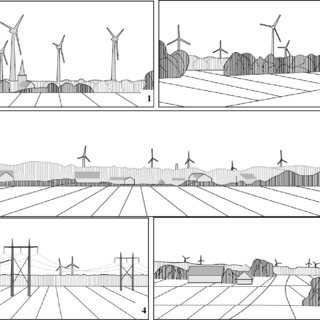 In recent years, the growth of capacity to generate electricity from wind energy has been extremely rapid, To the ...
In recent years, the growth of capacity to generate electricity from wind energy has been extremely rapid, To the ...
 In recent years, the growth of capacity to generate electricity from wind energy has been extremely rapid, To the ...
In recent years, the growth of capacity to generate electricity from wind energy has been extremely rapid, To the ...Economic Impacts of Wind Industry
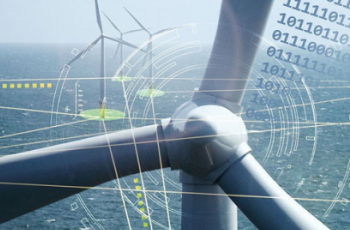 Any business development will have economic impacts on the local and regional economies, and wind energy projects are no ...
Any business development will have economic impacts on the local and regional economies, and wind energy projects are no ...
 Any business development will have economic impacts on the local and regional economies, and wind energy projects are no ...
Any business development will have economic impacts on the local and regional economies, and wind energy projects are no ...Wind Energy Cost Trends
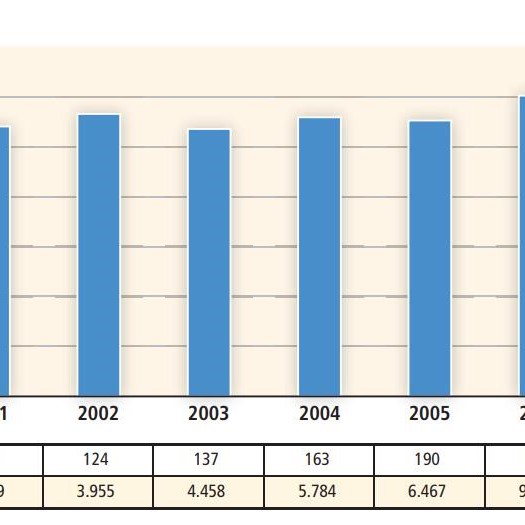 Though the cost of wind energy has declined significantly since the 1980s, policy measures are currently required to ensure ...
Though the cost of wind energy has declined significantly since the 1980s, policy measures are currently required to ensure ...
 Though the cost of wind energy has declined significantly since the 1980s, policy measures are currently required to ensure ...
Though the cost of wind energy has declined significantly since the 1980s, policy measures are currently required to ensure ...Challenges in Wind Industry
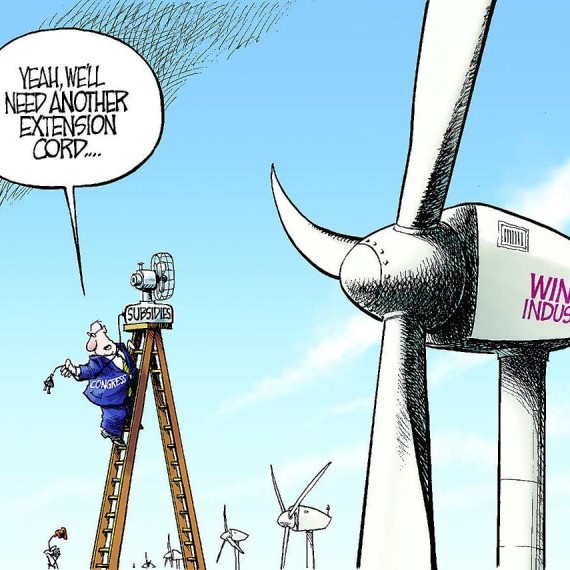 While wind power generation offers numerous benefits and advantages over conventional power generation, there are also some ...
While wind power generation offers numerous benefits and advantages over conventional power generation, there are also some ...
 While wind power generation offers numerous benefits and advantages over conventional power generation, there are also some ...
While wind power generation offers numerous benefits and advantages over conventional power generation, there are also some ...Employment Impacts of Wind Industry
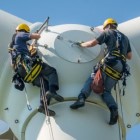 As with most construction and commercial development, wind energy industry create jobs. According to the 2016 Clean Jobs New ...
As with most construction and commercial development, wind energy industry create jobs. According to the 2016 Clean Jobs New ...
 As with most construction and commercial development, wind energy industry create jobs. According to the 2016 Clean Jobs New ...
As with most construction and commercial development, wind energy industry create jobs. According to the 2016 Clean Jobs New ...